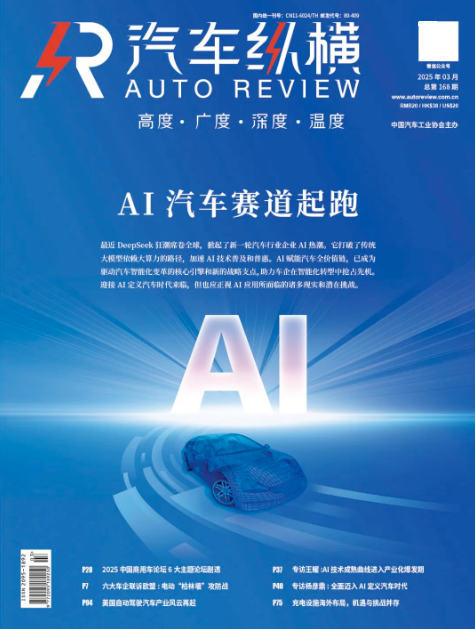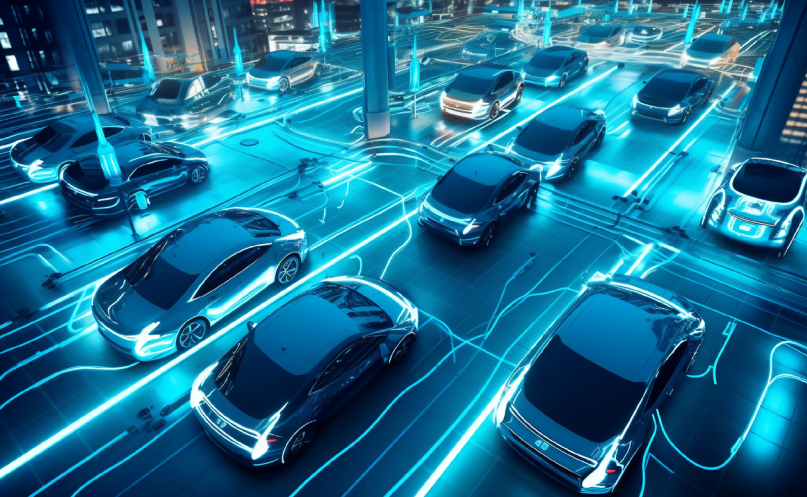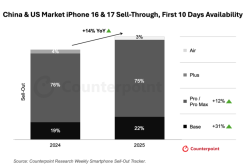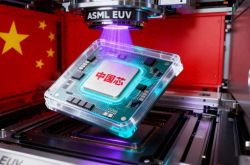AI浪潮下,汽车如何变身“智行先锋”
![]() 03/10 2025
03/10 2025
![]() 618
618
Editor's Note
Recently, the DeepSeek craze has swept the globe, igniting a new wave of AI enthusiasm among automotive companies. It breaks the traditional path of large models relying on massive computing power, accelerating the popularization and accessibility of AI technology. AI empowering the entire automotive value chain has become the core engine and new strategic fulcrum driving the intelligent transformation of vehicles, helping automakers seize the initiative in this transition. While embracing the AI-defined automotive era, we must also face up to the many real and potential challenges posed by AI applications.
Focusing on the AI automotive track, Auto Review presents this special "Cover Story" report. This special report consists of 6 articles, with the 4th article released today. Stay tuned.

In the rapid development of technology, AI has become a significant force driving changes across various industries, and the automotive sector is no exception: AI is reshaping the competitive landscape of the automotive industry, propelling vehicles from traditional modes of transportation to intelligent mobile spaces.
Early in 2025, DeepSeek quickly gained popularity due to its low-cost and high-efficiency understanding and logical thinking capabilities. Multiple automakers and brands, including Geely, Dongfeng, Chery, and IM Motors, have announced their integration with DeepSeek. Meanwhile, Changan Automobile and BYD held press conferences for their "Beidou Tianshu 2.0" plan and intelligent strategy, respectively. These events not only showcase the immense potential of AI technology but also herald the arrival of the era of automotive intelligence. Autonomous driving and smart cockpits are the most notable manifestations of this intelligence.
The 'Helmsman' of Autonomous Driving
In the realm of autonomous driving, AI has emerged as the core 'helmsman.' It functions like an experienced driver, constantly perceiving the vehicle's surroundings, making precise decisions, and controlling the vehicle's movement.
Environmental perception is the first step in autonomous driving. AI utilizes various sensors such as cameras, millimeter-wave radars, and LiDAR to collect information around the vehicle, converting these data into formats the vehicle can 'understand,' thereby identifying objects like roads, pedestrians, traffic signs, and other vehicles. Tesla's Autopilot system, for example, employs deep learning algorithms combined with cameras and radars to perceive the road environment in real-time.
The core of autonomous driving lies in decision-making and path planning, akin to the 'smart brain' of a human driver, requiring rational driving decisions based on perceived information. Traditional autonomous driving decision systems often rely on rules, limiting flexibility and adaptability. The introduction of AI, particularly reinforcement learning algorithms, enables vehicles to quickly make optimal decisions based on real-time road conditions, traffic rules, and their own states.

Take Baidu's Apollo Open Platform as an example. Its decision-making and planning module is based on deep learning and reinforcement learning technologies. Public tests have shown that vehicles equipped with the Apollo system can make a decision to decelerate and yield within 0.2 seconds when encountering a sudden lane change by a vehicle ahead and replan a safe driving trajectory. Additionally, the Apollo system can intelligently plan long-distance travel routes based on real-time traffic data and map information, avoiding congested road segments and improving travel efficiency. After users set a long-distance destination, the Apollo system comprehensively considers factors such as real-time traffic conditions and road construction information to plan the fastest and safest route for users.
AI is also the 'precise executor' of vehicles, playing a crucial role in translating decisions into vehicle control commands, enabling vehicles to become 'precise executors' and achieve precise driving. By controlling components such as the steering wheel, throttle, and brakes, AI ensures that the vehicle follows the predetermined path and speed. Vehicles equipped with adaptive cruise control systems are a typical application of AI in vehicle control. This system automatically adjusts the vehicle's speed based on the speed and distance of the vehicle ahead, maintaining a safe following distance, making driving easier and safer.
Simultaneously, AI can optimize control algorithms to achieve energy-efficient driving. Through analysis and learning of vehicle driving data, AI can identify the most energy-efficient driving methods, such as appropriately timing acceleration and deceleration to avoid unnecessary harsh braking and acceleration, thereby reducing vehicle energy consumption. Utilizing AI technology, new energy vehicles can optimize power output and energy recovery strategies based on the vehicle's battery level, driving conditions, and driving habits, improving energy utilization efficiency and extending the vehicle's driving range.
Moreover, AI's learning and adaptation capabilities enable autonomous driving systems to continuously evolve and improve. Through machine learning and deep learning algorithms, AI can learn from vast amounts of driving data, continually optimizing its decision-making and control strategies to adapt to various complex and changing road conditions.
For instance, Pony.ai, an early entrant in the autonomous driving field in China, is dedicated to developing safe, advanced, and reliable full-stack autonomous driving technology. They named their self-developed autonomous driving software and hardware system the 'Virtual Driver.' Through AI technology, Pony.ai continuously trains the 'Virtual Driver,' enabling it to adeptly handle complex scenarios such as narrow roads, extreme weather conditions like rain, snow, dust, and various 'long-tail scenarios,' ultimately evolving into a 'steady-tempered old driver.'
Bringing the Smart Cockpit to Life
If autonomous driving makes driving smarter, AI makes the vehicle's cockpit more 'humanized.' AI's impact on the smart cockpit is multifaceted, with its underlying logic revolving around bringing unprecedented changes and improvements to the smart cockpit through optimized technical support, enhanced interaction experiences, and innovations in cockpit form.
AI voice interaction is a highlight of the smart cockpit. Using speech recognition and natural language processing technologies, drivers can easily perform tasks such as navigation setup, music playback, and window control by simply giving voice commands, eliminating the need for manual operations and significantly enhancing driving safety and convenience.

For example, NIO's NOMI is an AI-based intelligent voice assistant capable of natural language interaction, supporting multi-turn dialogues and contextual understanding. iFLYTEK's intelligent voice assistant, leveraging advanced speech recognition and natural language understanding technologies, accurately comprehends user commands and provides quick, accurate responses, offering users a seamless interaction experience. Xpeng Motors' voice assistant XiaoP, also based on a large language model, exhibits strong natural language processing capabilities.
With AI's powerful data analysis capabilities, the smart cockpit can deeply understand users' usage habits, interests, and travel preferences, providing personalized services and creating exclusive travel experiences.
For instance, Audi's intelligent system automatically adjusts parameters such as vehicle power output, suspension stiffness, and steering assistance based on the user's driving habits, including acceleration, braking, and steering styles. Tesla collects data on users' driving habits, music preferences, navigation history, etc., utilizing AI algorithms to plan optimal travel routes and recommend music playlists for users.
Simultaneously, personalized adaptive adjustments are another important application of AI in the smart cockpit. AI systems can automatically adjust settings such as seats, air conditioning (temperature, humidity, etc.), and rearview mirrors based on the driver's habits and preferences, providing a personalized comfort experience.
Notably, emotional recognition technology adds a touch of 'humanity' to the smart cockpit. Through cameras and sensors, AI can monitor the driver's emotional state in real-time, such as fatigue, anxiety, excitement, and provide corresponding services and suggestions based on the emotional state. When detecting driver fatigue, the system automatically plays invigorating music or reminds the driver to rest. When the driver is anxious, the system plays soothing music and adjusts the in-car lighting to create a relaxing atmosphere. This emotional recognition and interaction feature make drivers feel cared for by the vehicle, enhancing driving comfort and safety.
For instance, NIO's NOMI can judge the user's emotional state based on their voice tone, facial expressions, and other information, providing more personalized services. When users are in a low mood, NOMI plays soothing music to comfort and encourage them. Mercedes-Benz has applied facial expression recognition technology in the smart cockpits of some models, which can monitor the driver's facial expressions in real-time to determine their fatigue level and concentration. In actual tests, vehicles equipped with this technology have significantly reduced the incidence of fatigue-related accidents.
Furthermore, the integration of AI technology with AR/VR technologies brings users an immersive in-car entertainment experience, transforming the vehicle cockpit into a mobile entertainment center. Augmented Reality Head-Up Display (AR HUD) technology overlays virtual information such as navigation instructions, speed, and fuel consumption directly into the driver's line of sight, eliminating the need for frequent glances at the instrument panel or navigation device, significantly enhancing driving safety and convenience.
During parking or rides, VR technology provides passengers with an immersive entertainment experience. The in-car VR entertainment system jointly launched by Audi and holoride matches VR content with vehicle movement data in real-time, allowing passengers to enjoy stimulating games, thrilling movies, and other entertainment within the vehicle. When the vehicle accelerates, turns, or brakes, the VR experience changes accordingly, enhancing immersion and interactivity.
With the development of AI technology, the multimodal interaction of smart cockpits has been further enriched. Besides voice interaction and facial recognition, smart cockpits also support various interaction methods such as gesture recognition and touch control, allowing users to choose the most suitable interaction method based on their needs and habits. For example, users can switch music and adjust volume through gesture operations; achieve automatic login and personalized settings through facial recognition; and operate the central control screen through touch control for a more intuitive and convenient interaction experience.
Where is the Auto Industry Heading in the AI Era
The deep integration of AI and vehicles is ushering in a new era. Intelligent vehicles are no longer mere modes of transportation but have evolved into mobile intelligent terminals, data collection platforms, and energy storage units. This transformation will reshape urban transportation, change people's travel modes, and propel society towards a smarter and more environmentally friendly direction.
The fusion of AI with other emerging technologies will also bring more innovations to automotive intelligence.
The development of quantum computing technology may provide powerful computing power support for the optimization of AI algorithms, significantly boosting the processing speed and decision-making accuracy of autonomous driving systems. Through quantum computing, autonomous driving systems can process massive amounts of sensor data in a shorter time and make more precise decisions, thereby improving the safety and reliability of autonomous driving. Edge computing technology allows vehicles to process data locally, reducing data transmission delays and improving system response speed. In smart cockpits, edge computing can quickly recognize and process user commands such as voice and gestures, providing a smoother interaction experience.
The popularization of 5G communication technology will provide stronger support for the development of the Internet of Vehicles. Information transmission between vehicles and between vehicles and infrastructure will be faster and more stable, enabling vehicle-to-road coordination. Through vehicle-to-road coordination, vehicles can obtain information about traffic conditions and signal light statuses on the road ahead in advance, thereby planning driving routes more intelligently and improving traffic efficiency.
AI-driven automotive intelligence will bring users an ultimate travel experience. The popularity of autonomous driving will make travel safer and more efficient, allowing people to freely work, entertain, or rest in the vehicle. During long-distance travels, passengers can work, watch movies, play games in the vehicle, making full use of travel time and improving life efficiency.
The smart cockpit will become an extension of people's living spaces, providing more personalized and convenient services. Vehicles can prepare relevant information and services in advance based on users' itineraries. On the way to work, vehicles can automatically play users' favorite news, music, etc.; when users return home from work, vehicles can connect with smart home systems in advance to turn on home air conditioning, lighting, etc.
Of course, we must also clearly recognize that the development of automotive intelligence still faces many challenges, such as data security and privacy protection, the improvement of laws and regulations, ethical considerations, etc. These issues require the joint efforts of governments, enterprises, research institutions, and all sectors of society to create a favorable environment for the healthy development of automotive intelligence by strengthening technological innovation, improving policies and regulations, and promoting international cooperation.
In summary, AI's application in autonomous driving and smart cockpits has brought about comprehensive changes in automotive intelligence. In autonomous driving, AI enhances the capabilities of environmental perception, decision-making, and vehicle control, making autonomous vehicles safer and more efficient. Despite current challenges, with continuous technological breakthroughs, the vision of fully autonomous driving is gradually becoming a reality. In the field of smart cockpits, AI realizes functions such as natural language interaction, emotional recognition and interaction, personalized services, and immersive entertainment, creating a more comfortable, convenient, and enjoyable driving and riding experience for users.
In the future, the deep integration of AI and vehicles will create more possibilities, with autonomous driving and smart cockpits achieving closer collaboration to provide users with more intelligent and considerate travel services. Under the wave of AI, vehicles are heading towards a future full of infinite possibilities.
Note: This article was first published in the "Cover Story" section of the March 2025 issue of Auto Review magazine. Stay tuned.
Related Reports: Cover Story (I): The Catfish Effect of DeepSeek, Igniting the AI Frenzy in Vehicles
Cover Story (II): Exclusive Interview with Wang Yao: The Maturity Curve of AI Technology Enters the Industrialization Explosion Period
Cover Story (III): Exclusive Interview with Yang Yanding: Comprehensively Entering the Era of AI-Defined Vehicles

Image: From the Internet
Article: Auto Review
Typesetting: Auto Review








